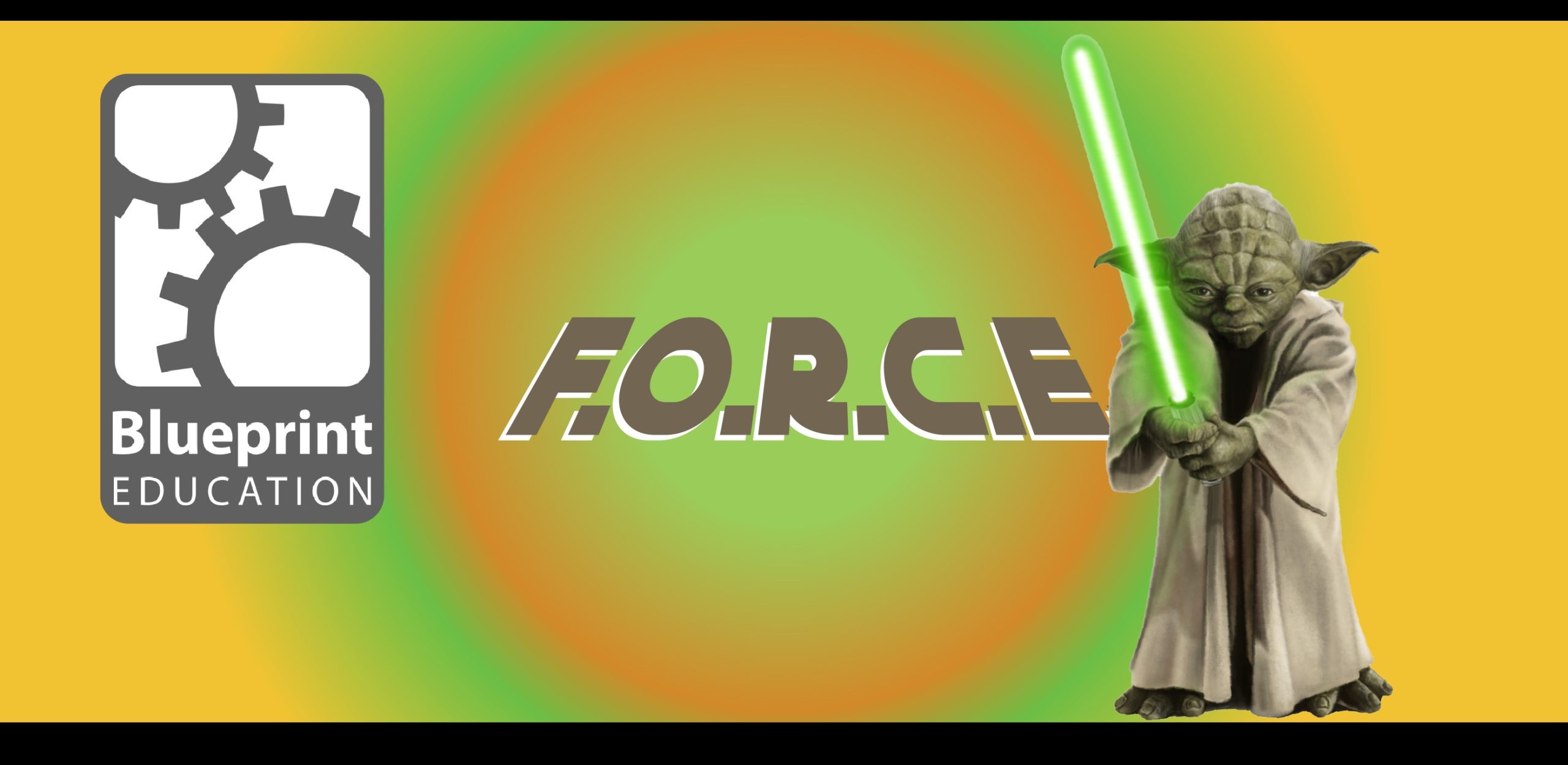Why FORCE?
Undeniably, the forces of nature impact our lives, from climate to catastrophe and all the little things in between. To an engineer, Force is the very foundation of movement and dynamics, as forces are external agents of change, pushing and pulling on one another. To Agilists, FORCE is similarly foundational to effective team development, productive creativity, and meaningful outcomes.
F.O.R.C.E. is an acronym from the Agile methodology of Scrum, representing the Scrum Values of focus, openness, respect, commitment, and extreme courage. These concepts themselves represent the forces of impact for learners, creators, leaders, and teams.
Tools & Features
The tools and features linked below share insights, perspectives, and strategies from educators and Agilists as they reflect on the scrum values that impact learners and teams. Expert strategies and suggestions from within Blueprint Education and from around the agile world help can help you bring the F.O.R.C.E. to your students, teams, and endeavors..
Focus Strategies for Students and Teams
Openness Tips from the Experts, Kristie Richardson & Amanda Williams, Contributors
Respect in a Learning OrganizationCommitment: See our January blog Tools & Features
Extreme Courage: Staff & Student Spotlight, featuring Student and Staff Contributors

Why Agile… in Education?
The Agile framework originated from the world of software development, and a need arose to collaborate on product development in a smarter way. Agile teams work effectively as a unit and can better react to the inevitable changes in innovation and education (Terry, 2023). The Agile philosophy encompasses a group of methodologies that guide goal development, continuous improvement, and collaboration.When applied to education, the Agile framework and methodologies look like: student engagement, teamwork, exploration, relevance, objective mastery, increasing depth-of-knowledge, 21st Century skills in action, self-efficacy, and intrinsic motivation. Agile learners iteratively develop and grow trust, collaboration, culture, and reflective practice for lifelong learning and success.
Join us on the journey at blueprinteducation.org/agile.
References:
- Schwaber, K., & Sutherland, J. (2020, November). The Scrum Guide
- [The Definitive Guide to Scrum: The Rules of the Game] [pdf].Scrum Alliance. (2021, June).
- The Agile Educator Guide [An Agile Framework for Modern Education] [pdf].Terry, J. (2023).
- Benefits of Agile Development. https://www.planview. com/resources/guide/agile-methodologies-a-beginners-guide/benefits-of-agile-development/
Author: Marina O’Connell, MAEd, CSM, CSPO, CAL K-12

